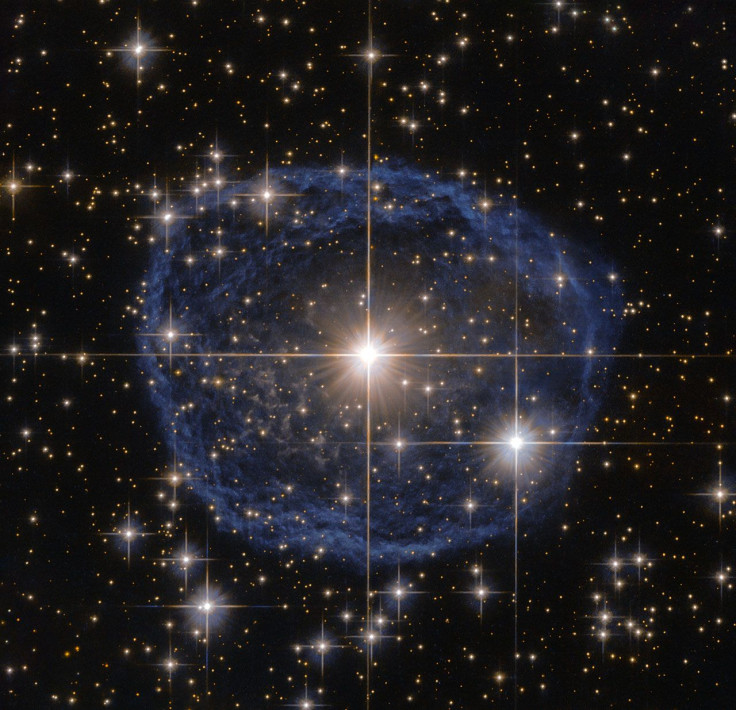NASA’s Hubble Photographs ‘Blue Bubble’ Nebula Around A Distant Wolf–Rayet Star

Floating in the dark void of space some 30,000 light-years from Earth lies a gigantic blue bubble. This bubble, part of what is known as a “Wolf–Rayet star,” has now been captured in all its glory by NASA's Hubble Space Telescope in one of the most detailed photographs of a star ever taken.
Wolf–Rayet stars “live fast and die hard,” exploding as supernova and blasting vast amounts of heavy elements into space used by later generations of stars and planets. Scientists study these celestial giants in order to understand how the largest and most massive stars in the universe evolve.
“Unfortunately, the lifecycle of a Wolf–Rayet star is only a few hundred thousand years — the blink of an eye in cosmic terms,” NASA explained in a statement released Friday. “Despite beginning life with a mass at least 20 times that of the sun, Wolf–Rayet stars typically lose half their mass in less than 100,000 years.”
By comparison, our star, the Sun, is already 4.5 billion years old and is expected to live for another 5 billion years.
This particular star, named WR 31a, is surrounded by a distinctive blue bubble — a Wolf–Rayet nebula made of dust, hydrogen, helium and other gases.
Scientists believe these nebulae — which are frequently ring-shaped or spherical — are created when fast-moving stellar winds interact with the outer layers of hydrogen ejected by Wolf–Rayet stars. The bubble — estimated to have formed around 20,000 years ago — is expanding at a rate of around 220,000 kilometers (136,700 miles) per hour.
Eventually, WR 31a will end its life as a spectacular supernova, seeding the cosmos with stellar material expelled that will later nourish a new generation of stars and planets.
© Copyright IBTimes 2024. All rights reserved.












